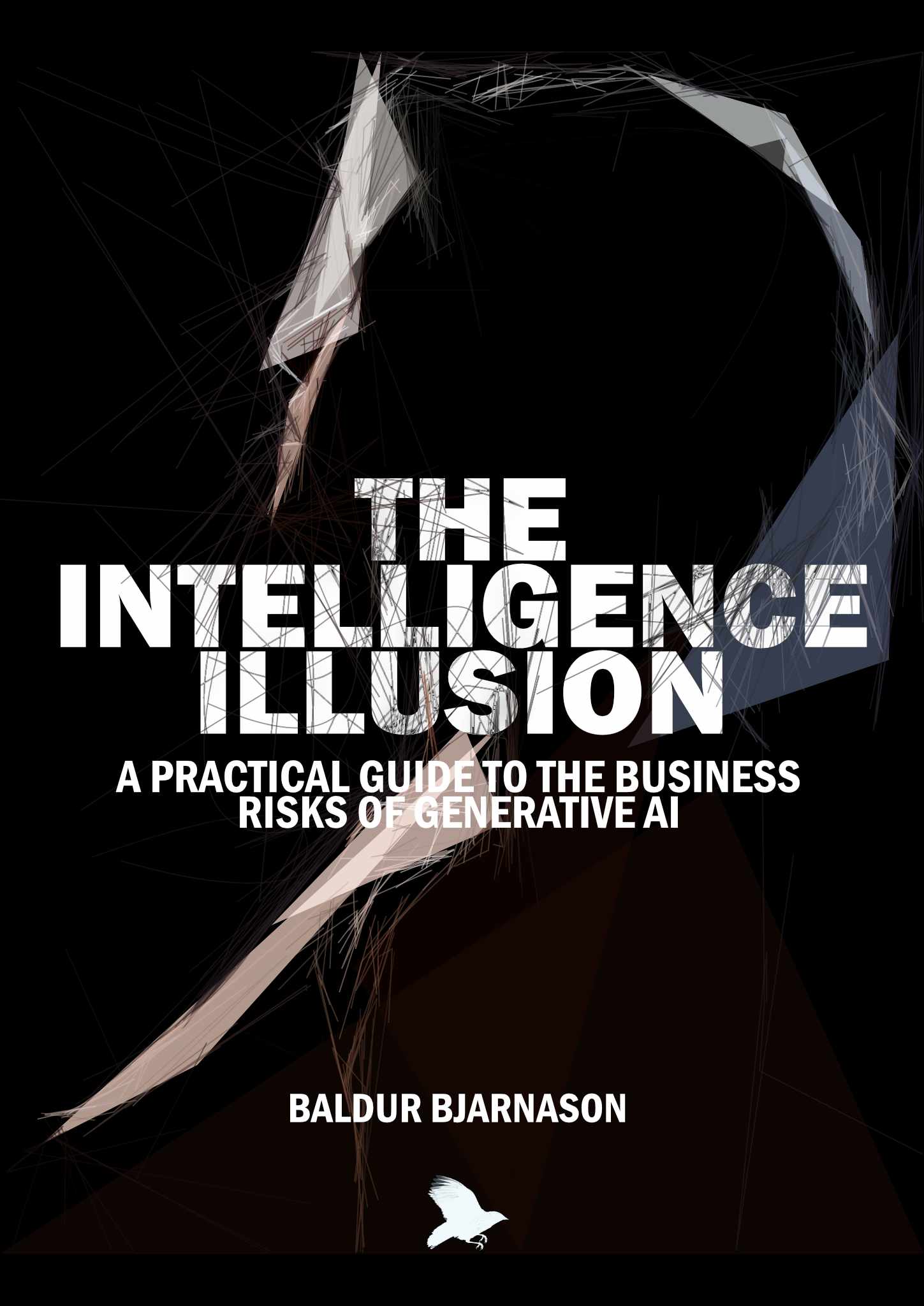Armstrong, Evan.
“AI Looks
Like a Bubble,” February 2023.
https://every.to/napkin-math/ai-looks-like-a-bubble.
Barr, Kyle.
“GPT-4 Is a
Giant Black Box and
Its Training Data
Remains a Mystery.”
Gizmodo, March 2023.
https://gizmodo.com/chatbot-gpt4-open-ai-ai-bing-microsoft-1850229989.
Bender, Emily M., Timnit Gebru, Angelina McMillan-Major, and
Shmargaret Shmitchell.
“On the Dangers of
Stochastic Parrots: Can
Language Models Be
Too Big?” In
Proceedings of
the 2021 ACM Conference on
Fairness, Accountability, and
Transparency, 610–23.
FAccT ’21.
New York, NY, USA: Association for Computing Machinery, 2021.
https://doi.org/10.1145/3442188.3445922.
Bender, Emily M., and Alexander Koller.
“Climbing Towards
NLU: On Meaning,
Form, and Understanding in the
Age of Data.” In
Proceedings
of the 58th Annual Meeting of the
Association for Computational
Linguistics, 5185–98. Online: Association for
Computational Linguistics, 2020.
https://doi.org/10.18653/v1/2020.acl-main.463.
Bourtoule, Lucas, Varun Chandrasekaran, Christopher A.
Choquette-Choo, Hengrui Jia, Adelin Travers, Baiwu Zhang, David
Lie, and Nicolas Papernot.
“Machine
Unlearning.” arXiv, December 2020.
https://doi.org/10.48550/arXiv.1912.03817.
Branco, Ruben, António Branco, João António Rodrigues, and João
Ricardo Silva.
“Shortcutted Commonsense:
Data Spuriousness in Deep
Learning of Commonsense
Reasoning.” In
Proceedings of the 2021
Conference on Empirical
Methods in Natural Language
Processing, 1504–21. Online; Punta Cana,
Dominican Republic: Association for Computational Linguistics,
2021.
https://doi.org/10.18653/v1/2021.emnlp-main.113.
Daubenschütz, Tim.
“The AI Crowd
Is Mad.” Proof In Progress, February
2023.
https://proofinprogress.com/posts/2023-02-01/the-ai-crowd-is-mad.html.
Devereaux, Bret.
“Collections: On
ChatGPT.” A Collection of Unmitigated
Pedantry, February 2023.
https://acoup.blog/2023/02/17/collections-on-chatgpt/.
Epley, Nicholas, Adam Waytz, and John T. Cacioppo.
“On
Seeing Human: A Three-Factor Theory of Anthropomorphism.”
Psychological Review 114, no. 4 (October 2007): 864–86.
https://doi.org/10.1037/0033-295X.114.4.864.
“How Much of AI’s Recent Success Is Due to the
Forer Effect? – Terence
Eden’s Blog,” February 2023.
https://shkspr.mobi/blog/2023/02/how-much-of-ais-recent-success-is-due-to-the-forer-effect/.
Jang, Myeongjun, and Thomas Lukasiewicz.
“Consistency
Analysis of ChatGPT.” arXiv,
March 2023.
https://doi.org/10.48550/arXiv.2303.06273.
Kim, Tae.
“Let’s Stop
Pretending—ChatGPT Isn’t
That Smart.” Barrons,
February 2023.
https://www.barrons.com/articles/chatgpt-ai-openai-chatbot-b9f4fa03.
Liao, Thomas, Rohan Taori, Inioluwa Deborah Raji, and Ludwig
Schmidt.
“Are We Learning
Yet? A Meta
Review of Evaluation
Failures Across Machine
Learning,” 2022.
https://openreview.net/forum?id=mPducS1MsEK.
Mahowald, Kyle, Anna A. Ivanova, Idan A. Blank, Nancy Kanwisher,
Joshua B. Tenenbaum, and Evelina Fedorenko.
“Dissociating
Language and Thought in Large Language Models: A Cognitive
Perspective.” arXiv, January 2023.
https://doi.org/10.48550/arXiv.2301.06627.
Marcus, Gary.
“Deep Learning: A
Critical Appraisal.” arXiv,
January 2018.
https://doi.org/10.48550/arXiv.1801.00631.
Marcus, Gary, and Ernest Davis.
“How Not to
Test GPT-3.” Substack newsletter.
The Road to AI We Can Trust, February 2023.
https://garymarcus.substack.com/p/how-not-to-test-gpt-3.
McCoy, Tom, Ellie Pavlick, and Tal Linzen.
“Right for the
Wrong Reasons: Diagnosing
Syntactic Heuristics in
Natural Language
Inference.” In
Proceedings of the 57th
Annual Meeting of the
Association for Computational
Linguistics, 3428–48. Florence, Italy:
Association for Computational Linguistics, 2019.
https://doi.org/10.18653/v1/P19-1334.
Narayanan, Arvind, and Sayash Kapoor.
“People Keep
Anthropomorphizing AI. Here’s
Why.” Substack newsletter.
AI Snake Oil, February
2023.
https://aisnakeoil.substack.com/p/people-keep-anthropomorphizing-ai.
Niven, Timothy, and Hung-Yu Kao.
“Probing
Neural Network
Comprehension of Natural
Language Arguments.” In
Proceedings of the 57th Annual
Meeting of the Association for
Computational Linguistics, 4658–64.
Florence, Italy: Association for Computational Linguistics, 2019.
https://doi.org/10.18653/v1/P19-1459.
Pennartz, Cyriel M. A., Michele Farisco, and Kathinka Evers.
“Indicators and Criteria of
Consciousness in Animals and
Intelligent Machines: An
Inside-Out
Approach.” Frontiers in Systems
Neuroscience 13 (2019).
https://www.frontiersin.org/articles/10.3389/fnsys.2019.00025.
Perrigo, Billy.
“Exclusive: The $2
Per Hour Workers
Who Made ChatGPT
Safer.” Time, January 2023.
https://time.com/6247678/openai-chatgpt-kenya-workers/.
Raji, Inioluwa Deborah, Emily M. Bender, Amandalynne Paullada,
Emily Denton, and Alex Hanna.
“AI and the
Everything in the Whole
Wide World
Benchmark.” arXiv, November 2021.
https://doi.org/10.48550/arXiv.2111.15366.
Raji, Inioluwa Deborah, I. Elizabeth Kumar, Aaron Horowitz, and
Andrew Selbst.
“The Fallacy of AI
Functionality.” In
2022 ACM
Conference on Fairness,
Accountability, and Transparency,
959–72. Seoul Republic of Korea: ACM, 2022.
https://doi.org/10.1145/3531146.3533158.
Robb, Bradley.
“WTF Is ChatGPT - a
No BS Breakdown.”
Accessed February 21, 2023.
https://bradleyrobb.net/notes/47/.
Rogers, Anna.
“Closed AI Models
Make Bad Baselines.”
Hacking Semantics, April 2023.
https://hackingsemantics.xyz/2023/closed-baselines/.
Salles, Arleen, Kathinka Evers, and Michele Farisco.
“Anthropomorphism in AI.” AJOB
Neuroscience 11, no. 2 (April 2020): 88–95.
https://doi.org/10.1080/21507740.2020.1740350.
Schaeffer, Rylan, Brando Miranda, and Sanmi Koyejo.
“Are
Emergent Abilities of Large
Language Models a
Mirage?” arXiv, April 2023.
https://doi.org/10.48550/arXiv.2304.15004.
Shanahan, Murray.
“Talking About
Large Language
Models.” arXiv, February 2023.
https://doi.org/10.48550/arXiv.2212.03551.
Simonite, Tom.
“Now That Machines
Can Learn, Can
They Unlearn?” Wired.
Accessed February 21, 2023.
https://www.wired.com/story/machines-can-learn-can-they-unlearn/.
Stark, Luke, and Jevan Hutson.
“Physiognomic
Artificial Intelligence.” {SSRN}
{Scholarly} {Paper}. Rochester, NY, September 2021.
https://doi.org/10.2139/ssrn.3927300.
Vincent, James.
“Introducing the AI
Mirror Test, Which Very Smart People
Keep Failing.” The Verge, February 2023.
https://www.theverge.com/23604075/ai-chatbots-bing-chatgpt-intelligent-sentient-mirror-test.
Walton, Adele.
“The Ghosts Behind AI,”
February 2023.
https://thelead.uk/ghosts-behind-ai.
Watson, David.
“The Rhetoric and
Reality of Anthropomorphism in
Artificial Intelligence.”
Minds and Machines 29, no. 3 (September 2019): 417–40.
https://doi.org/10.1007/s11023-019-09506-6.
Weizenbaum, Joseph. Computer Power and Human Reason: From
Judgment to Calculation. San Francisco: Freeman, 1976.
